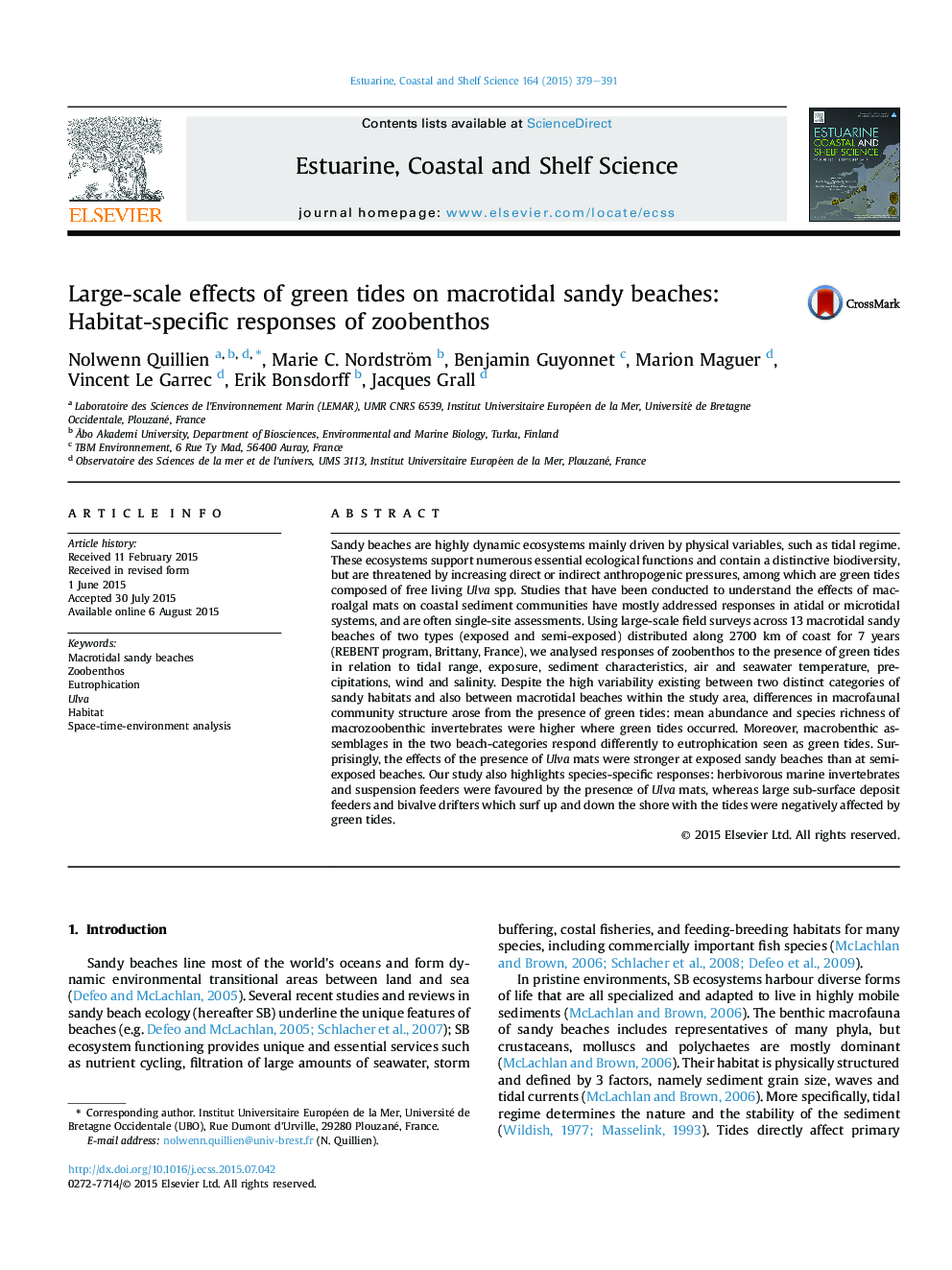| کد مقاله | کد نشریه | سال انتشار | مقاله انگلیسی | نسخه تمام متن |
|---|---|---|---|---|
| 6384723 | 1626633 | 2015 | 13 صفحه PDF | دانلود رایگان |
عنوان انگلیسی مقاله ISI
Large-scale effects of green tides on macrotidal sandy beaches: Habitat-specific responses of zoobenthos
ترجمه فارسی عنوان
اثرات گسترده ای از جزر و مد های سبز در سواحل شنی های بزرگ ما: پاسخ های ویژه زیستگاه زوبتوس
دانلود مقاله + سفارش ترجمه
دانلود مقاله ISI انگلیسی
رایگان برای ایرانیان
موضوعات مرتبط
مهندسی و علوم پایه
علوم زمین و سیارات
زمین شناسی
چکیده انگلیسی
Sandy beaches are highly dynamic ecosystems mainly driven by physical variables, such as tidal regime. These ecosystems support numerous essential ecological functions and contain a distinctive biodiversity, but are threatened by increasing direct or indirect anthropogenic pressures, among which are green tides composed of free living Ulva spp. Studies that have been conducted to understand the effects of macroalgal mats on coastal sediment communities have mostly addressed responses in atidal or microtidal systems, and are often single-site assessments. Using large-scale field surveys across 13 macrotidal sandy beaches of two types (exposed and semi-exposed) distributed along 2700Â km of coast for 7 years (REBENT program, Brittany, France), we analysed responses of zoobenthos to the presence of green tides in relation to tidal range, exposure, sediment characteristics, air and seawater temperature, precipitations, wind and salinity. Despite the high variability existing between two distinct categories of sandy habitats and also between macrotidal beaches within the study area, differences in macrofaunal community structure arose from the presence of green tides: mean abundance and species richness of macrozoobenthic invertebrates were higher where green tides occurred. Moreover, macrobenthic assemblages in the two beach-categories respond differently to eutrophication seen as green tides. Surprisingly, the effects of the presence of Ulva mats were stronger at exposed sandy beaches than at semi-exposed beaches. Our study also highlights species-specific responses: herbivorous marine invertebrates and suspension feeders were favoured by the presence of Ulva mats, whereas large sub-surface deposit feeders and bivalve drifters which surf up and down the shore with the tides were negatively affected by green tides.
ناشر
Database: Elsevier - ScienceDirect (ساینس دایرکت)
Journal: Estuarine, Coastal and Shelf Science - Volume 164, 5 October 2015, Pages 379-391
Journal: Estuarine, Coastal and Shelf Science - Volume 164, 5 October 2015, Pages 379-391
نویسندگان
Nolwenn Quillien, Marie C. Nordström, Benjamin Guyonnet, Marion Maguer, Vincent Le Garrec, Erik Bonsdorff, Jacques Grall,
